Comet 46P to glow green in weekend sky during close encounter with Earth
This weekend will feature an uncommon scene in the night sky as a comet glides past the Earth.
Comet 46P/Wirtanen is a small comet that has been growing brighter over the past few weeks, and it is expected to be bright enough to see with the naked eye on Saturday night and Sunday night.
"On Dec. 16, 46P will be only 7.2 million miles from Earth and will reach an estimated naked eye magnitude of 3 to 7.5, making this comet's pass the brightest predicted and the brightest close approach to Earth in over 20 years," NASA said.
This will be the 10th-closest distance that a comet has come to the Earth since the start of the space age in the 1950s, according to the University of Maryland. Despite its close approach, there is no threat of it colliding with the Earth or the moon.
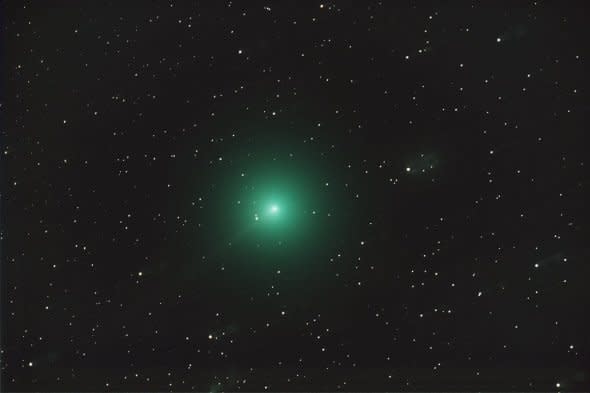
Comet 46p/Wirtanen as seen from Kaua'i, Hawaii. (Photo/Jim Denny)
Comet 46P will not look like famous comets, such as Halley's Comet or Comet Hale-Bopp, but it should be bright enough to see from darker spots.
Those looking for it in light-polluted areas, such as Chicago or Los Angeles, may have a difficult time seeing it without the help of a telescope or binoculars.
The comet will look like a bright, slightly green star with a diffuse glow surrounding it.
"It's not expected to have a big spectacular tail; it's going to be a smear," said Matthew J. Holman, senior astrophysicist and director of the Minor Planet Center at the Harvard-Smithsonian Center for Astrophysics.
"It may not be obvious to people what they are seeing, and they may need to use what we call averted vision, meaning you don't look right at the thing, but you look away from it and look in your peripheral vision," Holman said.
"Your peripheral vision is more sensitive to light and dark, and so with a little practice, you can see a faint thing in the sky with your averted vision that you can't see when directly looking at it," Holman added.
Those with a telescope or pair of binoculars will be able to glean a better look at the celestial object as it glides past the planet.
Where to see Comet 46P in the night sky
Since the comet is making a speedy flight past the Earth, it will appear in a different part of the sky each night.
A sky chart showing the comet's location in the night sky can be found below.
It will be easiest to see on Saturday night and Sunday night on its closest approach to the Earth. This is when it will be at its brightest and will be sitting between the famous constellation Orion and the Pleiades star cluster.
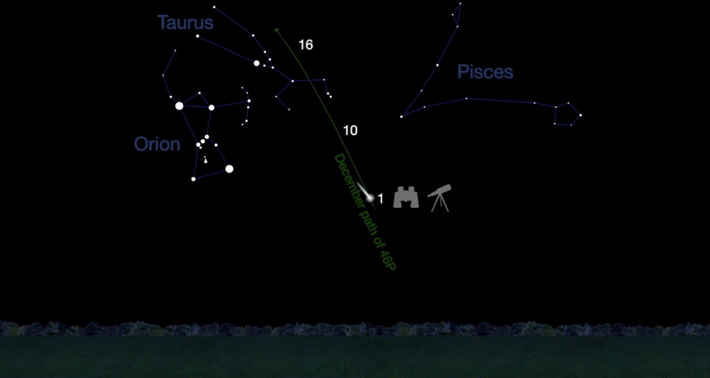
(Animation/NASA)
People hoping to see Comet 46P on Saturday night or Sunday night may want to check their local weather forecast and plan accordingly as clouds may interfere with viewing conditions.
"The best viewing on both nights will be found in the Rockies and central U.S., where chilly but clear conditions are expected through the weekend," AccuWeather Meteorologist Faith Eherts said.
"A storm moving into the eastern U.S. this weekend means many stargazers from the Southeast to New England could have trouble seeing the night sky on Saturday," Eherts said.
"In the West, coastal areas from San Francisco northward as well as most of the Pacific Northwest will be encased in clouds," Eherts added.
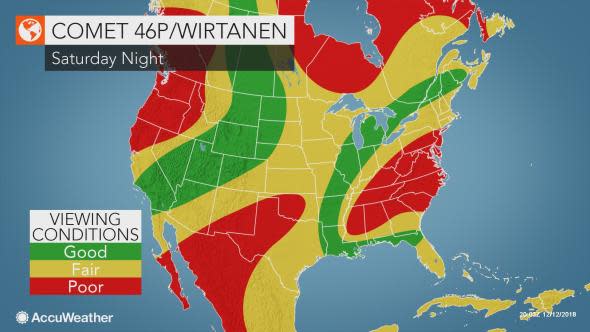
Breaks in the clouds could lead to better viewing conditions in the eastern U.S. on Sunday night, but clouds could still interfere with viewing conditions, especially around the Great Lakes and mid-Atlantic.
"While the eastern third of the nation has slightly better conditions on Sunday night, those in the West will have no such luck. In fact, the clouds are expected to spread as far south as Los Angeles by late Sunday night as a storm moves onshore," Eherts said.
If it's too cloudy to see the comet over the weekend, onlookers should be able to see the comet on the days leading up to and immediately following its close pass. However, it will gradually grow dimmer through the second half of December as it moves away from the planet.
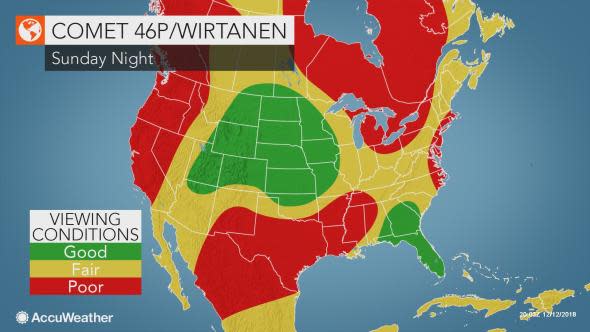
Folks heading outside to look for Comet 46P should also keep an eye out for a few shooting stars.
The Geminid meteor shower peaks on Thursday night into early Friday morning, bringing up to 120 meteors per hour. Although the peak will have passed by the weekend, onlookers may still be able to spot some meteors.
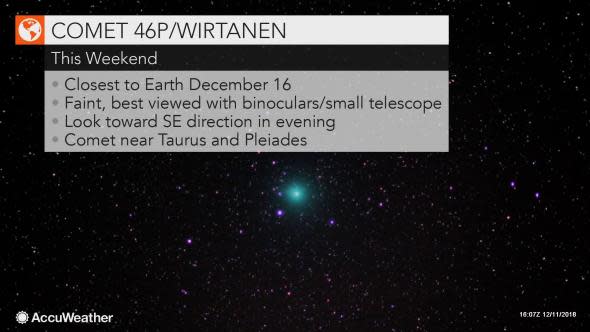
Comet 46P/Wirtanen is less than a mile across, just a fraction of the size of famous comets such as Halley's Comet and Comet Hale-Bopp.
"Even though it's only [0.6 of a mile] across, it's coming so close to us that telescopes will allow people to observe things that they don't typically get the opportunity to observe," Holman said.
"This is a really great opportunity because this is far brighter than most comets that are studied," Holman said.
After Comet 46P/Wirtanen passes, the next comet to make such a close approach to Earth will be 249P/LINEAR 53 on Nov. 4, 2029.
A sky chart showing the location of Comet 46P in the night sky into early January:

(Image/Sky & Telescope)
Questions or comments? Email Brian Lada at Brian.Lada@accuweather.com and be sure to follow him on Twitter!
Follow @wxlada

